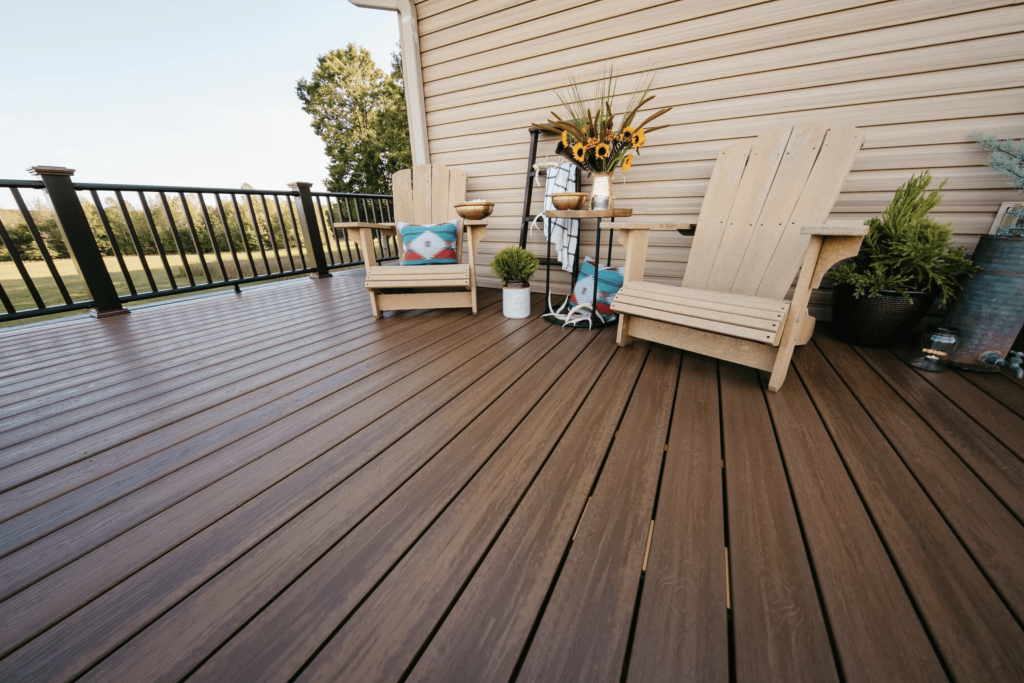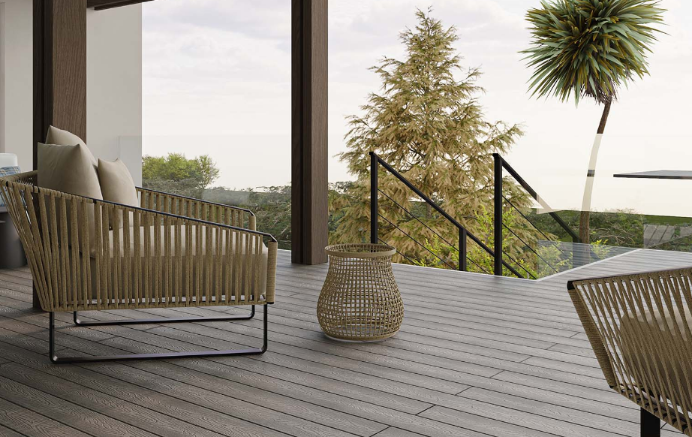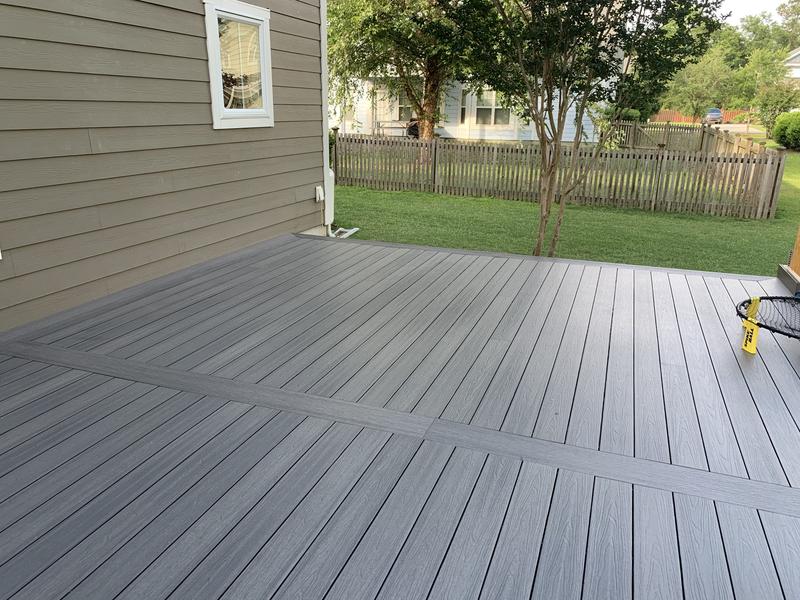In today’s modern architectural landscape, composite fencing has become one of the most popular and sustainable choices for both residential and commercial projects in Australia. Whether you are a business owner managing a hospitality venue, retail complex, educational facility, or industrial property, composite fencing Australia offers a perfect balance between visual appeal, durability, and low maintenance.
Table of Contents
Now, Hosung will explore everything you need to know about composite fencing in Australia, including its types, colors, prices, and the reasons it is an ideal investment for businesses that value long-term aesthetics and functionality.
What Is Composite Fencing?
Composite fencing is a modern alternative to traditional timber or metal fences. It is made from a blend of recycled wood fibers and plastic polymers, combining the natural beauty of wood with the strength and weather resistance of synthetic materials.
Unlike traditional wood, composite fencing does not warp, crack, rot, or fade easily, even under Australia’s intense UV exposure and changing weather conditions. It provides a long-lasting solution with minimal upkeep — a crucial advantage for businesses that want to reduce maintenance costs.

Why Choose Composite Fencing in Australia?
2.1. Superior Durability
Australia’s climate varies from tropical north to arid inland and coastal zones, meaning fences must endure harsh sun, strong winds, and heavy rainfall. Composite fencing is engineered to withstand all these environmental challenges.
It is moisture-resistant, UV-stable, and termite-proof, ensuring long service life without frequent repair or repainting.
2.2. Sustainable and Eco-Friendly
With environmental responsibility becoming a key part of modern construction, composite fencing is made using recycled materials, making it an environmentally friendly choice. It helps reduce the demand for virgin wood and minimizes waste going to landfills.
2.3. Aesthetic Versatility
Composite fencing offers a natural wood-like texture with a wide variety of colors and finishes. It can complement different architectural styles — from rustic countryside settings to modern urban spaces.
2.4. Low Maintenance
Unlike timber that requires staining or sealing, composite fences only need occasional cleaning with soap and water to maintain their fresh appearance. For commercial properties such as restaurants, offices, and retail centers, this feature saves both time and long-term maintenance costs.
2.5. Sound and Privacy Control
Composite fences are denser than wood, providing better sound insulation — a great benefit for urban or high-traffic business locations.

Types of Composite Fencing in Australia
Composite fencing comes in several structural types, each with unique advantages and applications. Understanding these types helps businesses select the most suitable option for their properties.
3.1. Horizontal Slat Fencing
Horizontal composite fencing is one of the most popular modern designs in Australia. It consists of horizontal slats that create a sleek, contemporary look ideal for offices, cafes, and urban developments.
Advantages: Modern appeal, privacy control, and airflow.
Common Applications: Commercial offices, residential developments, and pool enclosures.
3.2. Vertical Board Fencing
Vertical composite fences resemble traditional timber fences but offer a much longer lifespan. They are sturdy, formal, and provide a strong sense of security.
Advantages: Classic aesthetic, strong structure, and low maintenance.
Common Applications: Educational institutions, parks, and business frontages.
3.3. Privacy Fence Panels
Privacy composite fences are designed for maximum concealment and sound reduction. They have no visible gaps between panels, ensuring full privacy for enclosed areas.
Advantages: Noise reduction, full coverage, and security.
Common Applications: Outdoor seating areas, spa centers, and residential complexes.
3.4. Decorative Composite Fencing
Some composite fences include laser-cut screens or patterned panels, combining functionality with visual appeal. They’re perfect for businesses that want to create a distinctive brand image or add architectural flair.
Advantages: Customizable, artistic design, modern elegance.
Common Applications: Hotels, restaurants, resorts, and shopping centers.

Popular Colors of Composite Fencing in Australia
Australian consumers and designers value flexibility in color to match different landscaping themes and building exteriors. Composite fencing offers an impressive palette of shades inspired by both natural and contemporary tones.
4.1. Classic Timber Tones
Teak: A warm golden-brown color that mimics natural hardwood. Ideal for tropical or coastal settings.
Walnut: Deep, rich brown with woodgrain texture, suitable for luxurious commercial properties.
Redwood: Earthy red tone reminiscent of Australian hardwood species.
4.2. Neutral Modern Shades
Grey: A versatile color that suits minimalist and industrial designs. Grey composite fencing blends perfectly with concrete, stone, and metal elements.
Charcoal: One of the most popular shades in modern architecture. Offers a bold contrast to light-colored buildings.
Sandstone: Soft beige tone perfect for blending with natural surroundings, commonly seen in resorts and suburban areas.
4.3. Dark and Bold Options
Ebony: A dramatic black finish providing a premium and striking aesthetic.
Graphite: Sleek metallic shade that works beautifully with modern commercial architecture.
4.4. Light and Earthy Variants
Oak: A lighter woodgrain that gives warmth to outdoor spaces.
Driftwood: Weathered tone resembling aged timber, perfect for rustic or coastal designs.
Each color is UV-resistant, ensuring long-lasting beauty without fading — even under harsh Australian sunlight. Many fencing systems also include dual-tone or reversible boards for creative design flexibility.
Composite Fencing Price in Australia
The price of composite fencing in Australia depends on multiple factors, such as material quality, board thickness, design complexity, and installation method. Below is a general price range to help you plan your budget.
| Category | Estimated Price (AUD) | Description |
|---|---|---|
| Basic composite fence boards | $95 – $130 per linear meter | Suitable for small commercial or residential projects. |
| Mid-range composite fencing | $130 – $180 per linear meter | Enhanced durability and aesthetic finish. |
| Premium decorative or privacy systems | $180 – $250 per linear meter | High-density materials with textured finishes or integrated posts. |
| Installation cost | $80 – $120 per meter | Depends on terrain, height, and site conditions. |
While the initial cost of composite fencing may be higher than that of timber, the lifetime cost is significantly lower because it requires minimal upkeep and lasts for decades.

Comparing Composite Fencing with Other Materials
Before making a purchasing decision, it’s important to understand how composite fencing compares with traditional options.
| Feature | Composite Fence | Timber Fence | Metal Fence |
|---|---|---|---|
| Durability | 25–30 years | 5–10 years | 10–15 years |
| Maintenance | Minimal (cleaning only) | Requires staining and sealing | May rust and need repainting |
| Appearance | Natural wood-like texture | Natural look but fades over time | Industrial appearance |
| Weather Resistance | Excellent | Poor | Good |
| Eco-Friendliness | Made from recycled materials | Requires timber cutting | Moderate |
| Cost Efficiency (long-term) | High | Low | Moderate |
From the comparison, composite fencing stands out as the most balanced and sustainable choice, especially for businesses that value both performance and design.
Applications of Composite Fencing for Businesses
Composite fencing suits a variety of commercial applications due to its strength, privacy, and visual versatility.
7.1. Hotels and Resorts
Composite fences enhance the aesthetic appeal of outdoor leisure areas, providing privacy around pools, gardens, and dining zones while maintaining an inviting natural appearance.
7.2. Restaurants and Cafés
Outdoor dining areas benefit from composite fencing’s stylish look and ability to block noise and wind. It creates a comfortable and private environment for guests.
7.3. Office Buildings
Businesses use composite fences to divide parking spaces, enclose staff areas, or enhance the building’s architectural design. The modern appearance reflects professionalism and sustainability.
7.4. Educational Institutions
Schools and universities adopt composite fencing for secure boundaries without sacrificing appearance. Its durability ensures minimal maintenance over many years.
7.5. Retail and Shopping Complexes
Composite fences act as both functional barriers and design features for landscaping, signage backgrounds, and garbage enclosures.
7.6. Industrial and Logistics Facilities
Composite fencing offers a clean, organized boundary that resists wear from wind, rain, and UV exposure — ideal for heavy-duty environments.
Installation Tips for Composite Fencing
Proper installation is key to maximizing the lifespan and appearance of your fence. Here are several tips to consider:
Choose quality posts and supports. Use aluminum or steel posts for structural stability.
Allow for expansion. Composite boards expand slightly under heat; maintain small spacing between boards.
Ensure proper alignment. Leveling ensures a neat and professional finish.
Clean after installation. Remove debris and construction dust for an immediate polished look.
Periodic inspection. Check fasteners and joints annually to maintain optimal performance.
For large-scale commercial installations, professional fencing contractors are recommended to ensure precise results.
How to Maintain Composite Fencing
Maintenance is one of the key advantages of composite fencing in Australia.
Regular Cleaning: Use warm water, mild detergent, and a soft brush every few months.
Avoid Harsh Chemicals: Stay away from bleach or strong solvents.
Remove Debris: Keep leaves or organic matter off the fence to prevent stains.
Inspect Hardware: Ensure screws or clips are secure, especially in high-wind regions.
With minimal care, composite fences can maintain their appearance and structural integrity for decades.

The Future of Composite Fencing in Australia
The demand for composite fencing is rapidly increasing across Australia due to its eco-friendly nature, long-term value, and aesthetic adaptability. As sustainability standards rise and more businesses embrace green building principles, composite materials are set to become a standard feature in fencing solutions.
Future innovations may introduce even more color variations, textured finishes, and smart integration options, such as lighting or acoustic features.
Conclusion
Choosing the best composite fencing Australia from Hosung WPC has to offer means investing in beauty, sustainability, and longevity. From sleek modern slats to privacy panels, composite fences deliver exceptional performance in all environments — from coastal resorts to urban business districts.
With a wide variety of types, colors, and price options, businesses can easily find a composite fencing solution that enhances both function and design while aligning with environmental goals.
If you’re planning a fencing upgrade for your business property, consider composite fencing as a smart, sustainable, and future-proof choice that reflects the best of modern Australian outdoor design.




